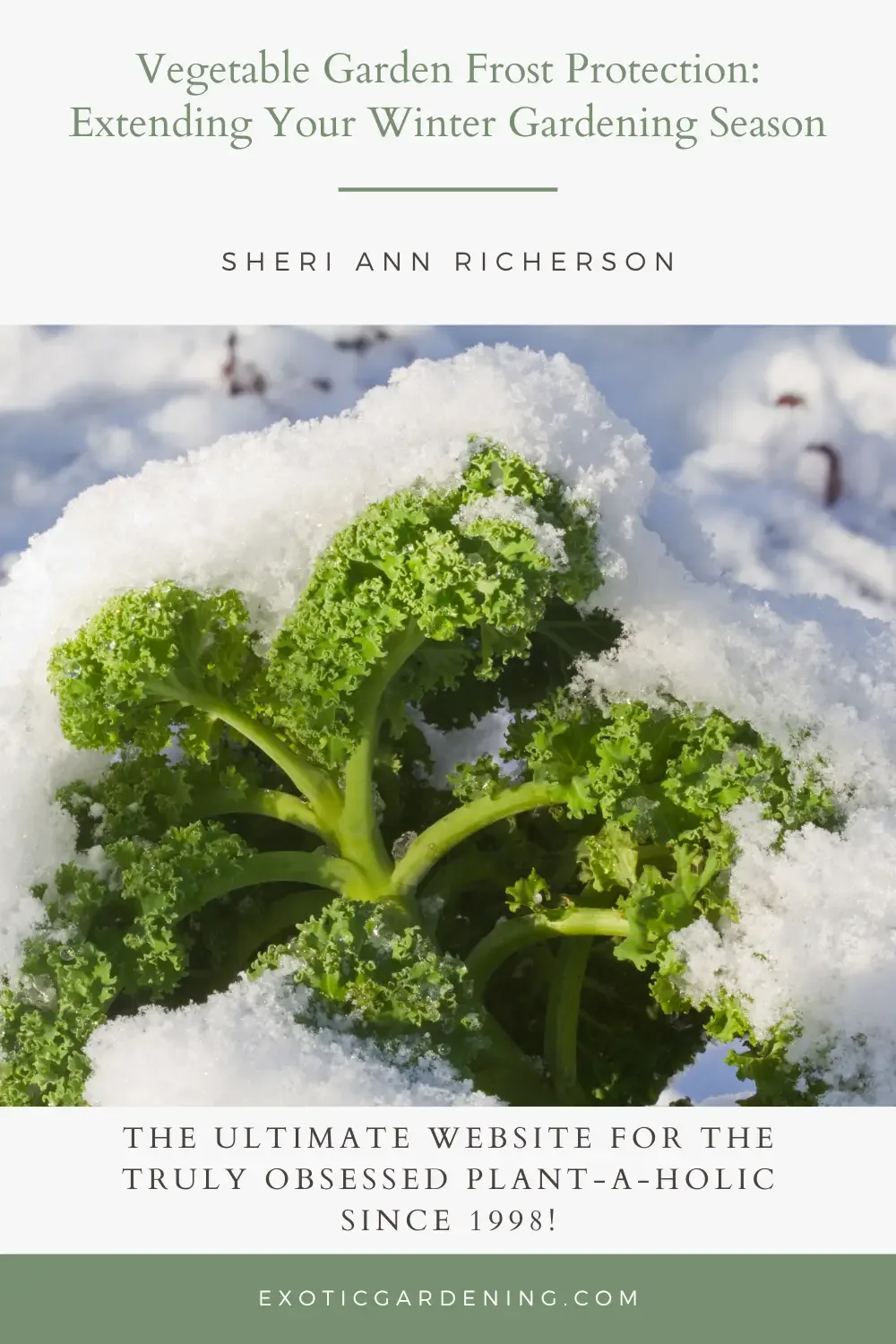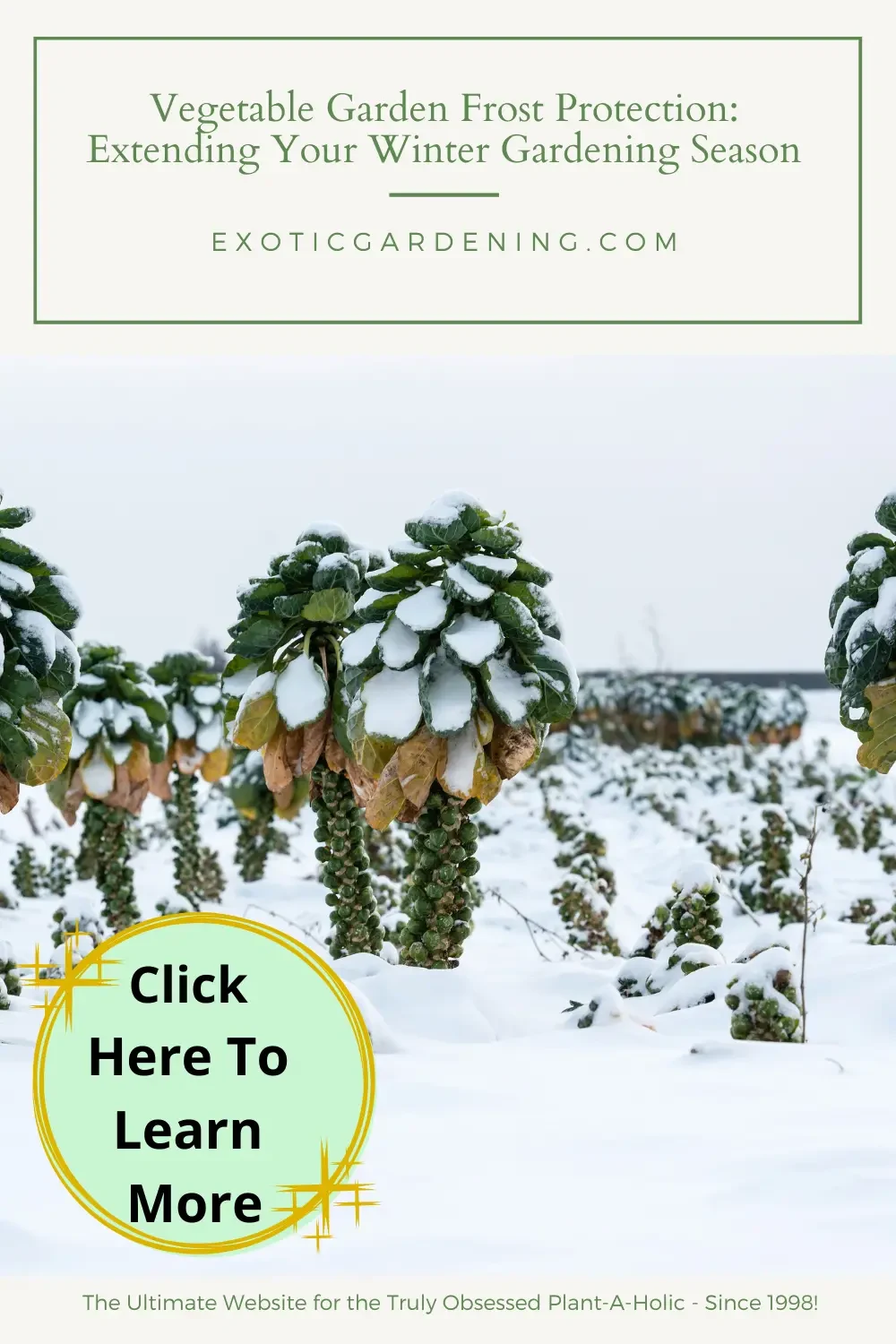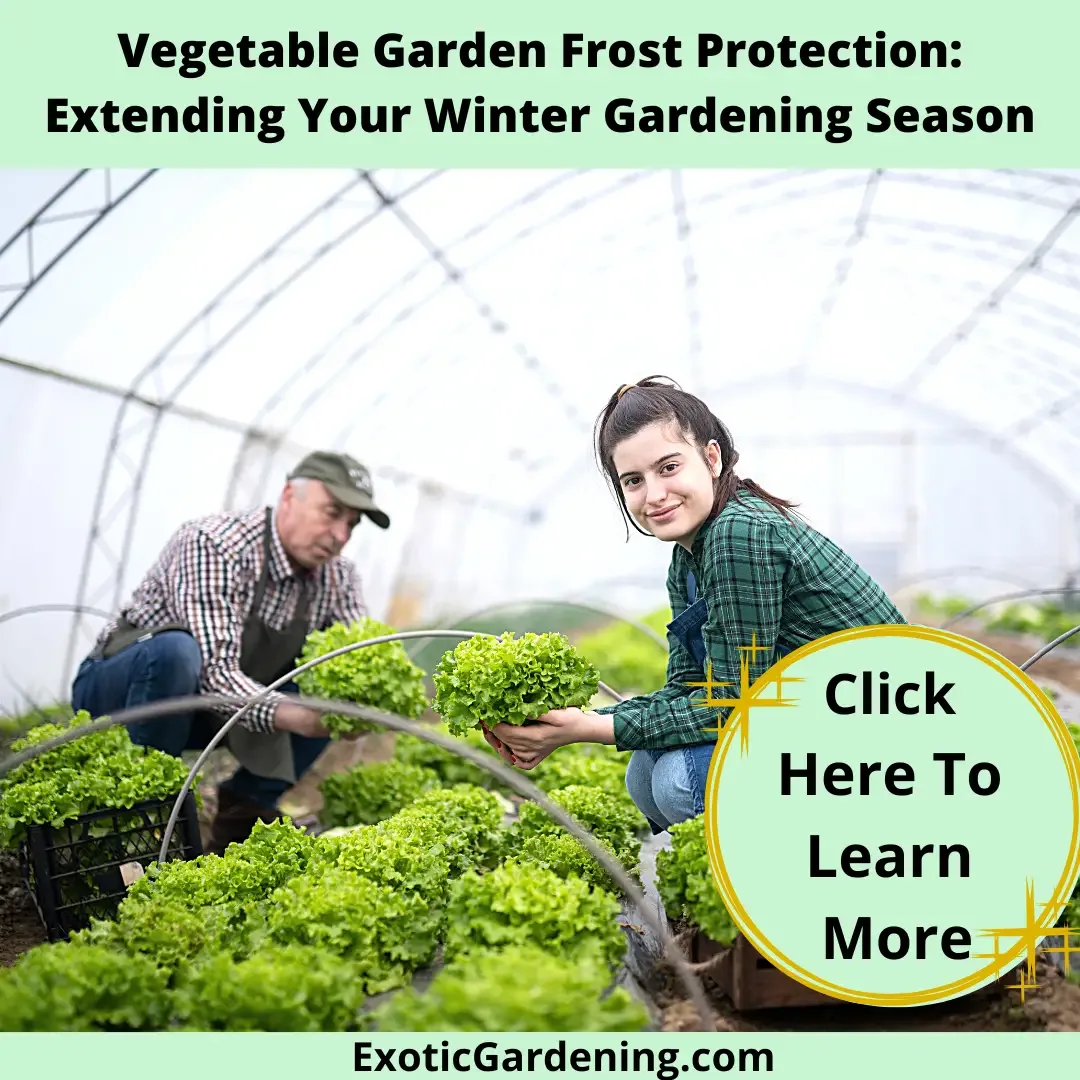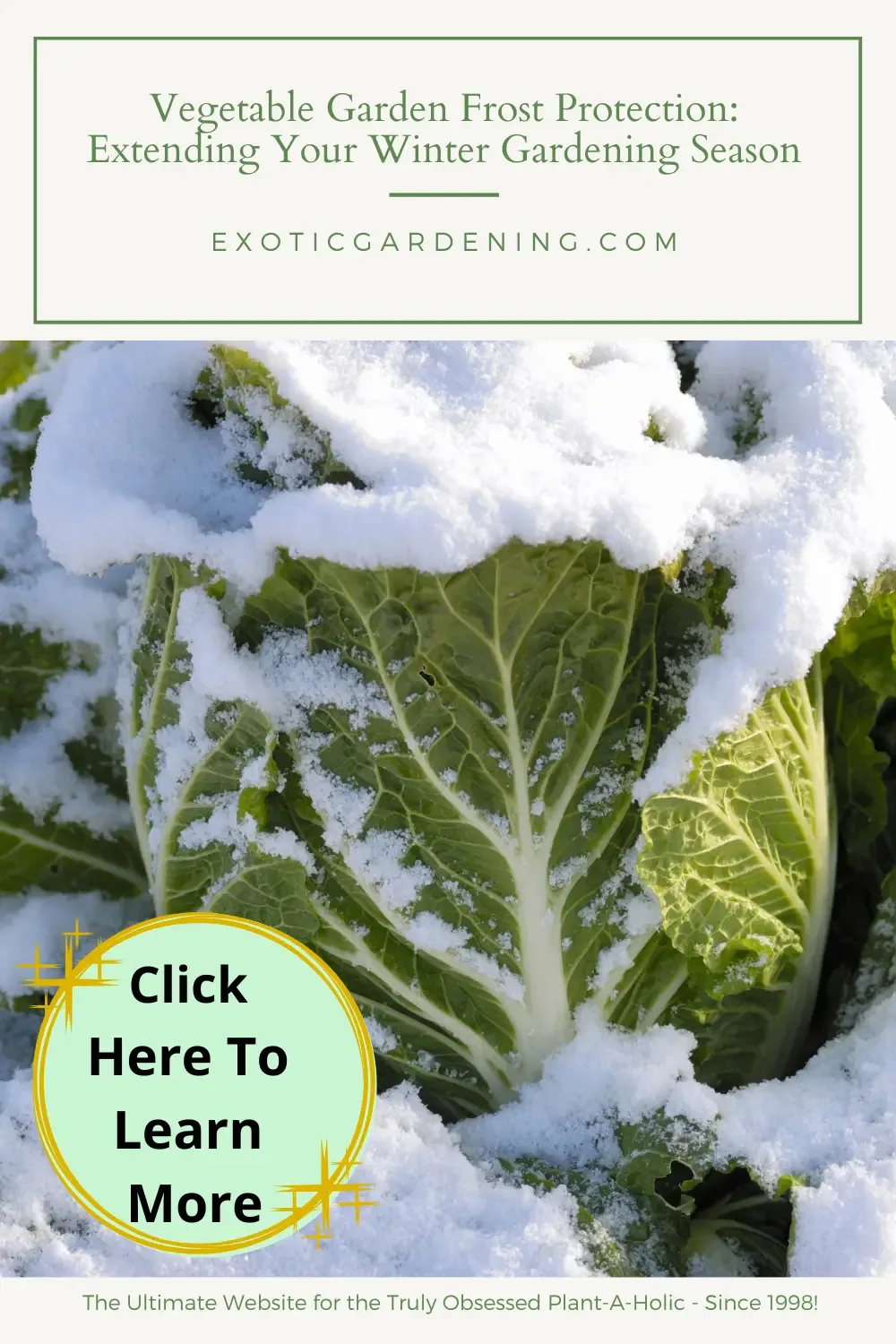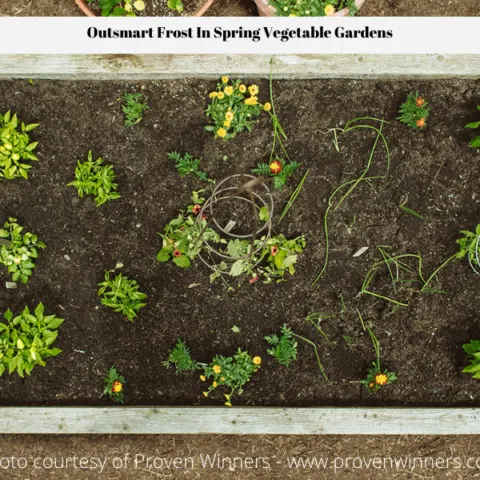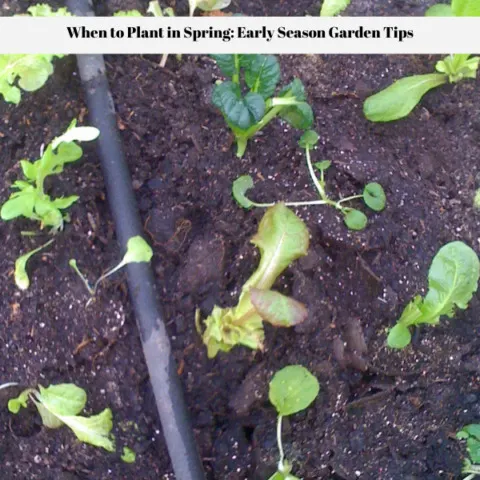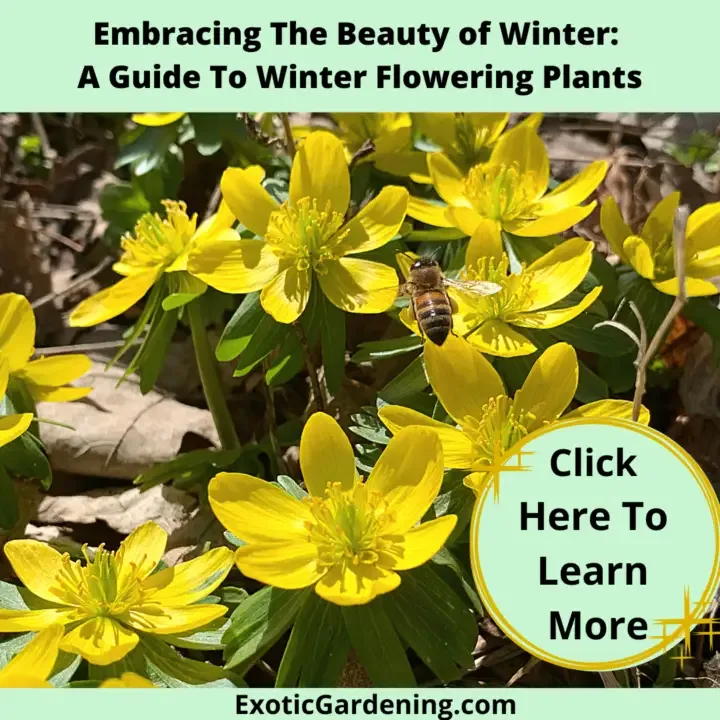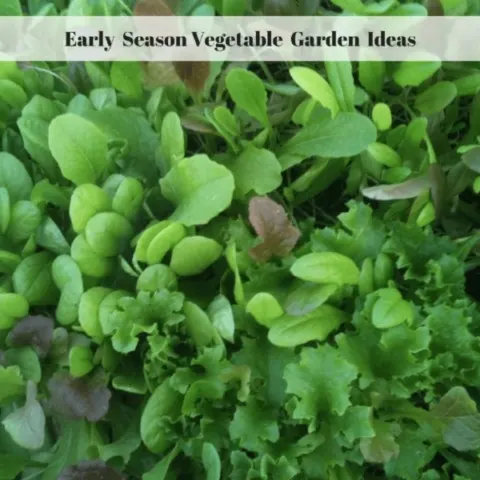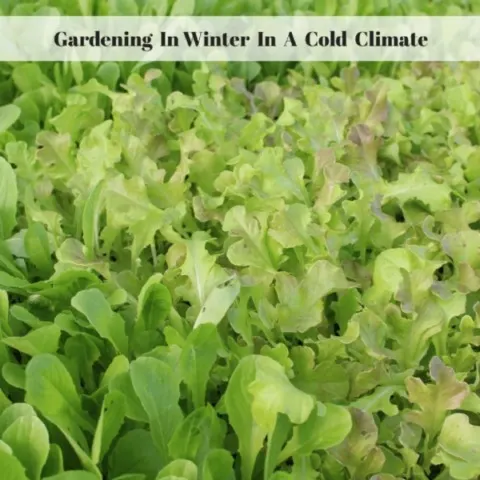When winter's chill descends upon your garden, it might seem like your green thumb has to take a long hiatus.
But wait, there's good news for gardening enthusiasts – the cold season doesn't have to mark the end of your horticultural endeavors, especially once you understand vegetable garden frost protection methods.
With the right techniques and a bit of knowledge about which vegetables can handle frost, you can enjoy fresh produce right from your garden throughout the winter.
In this comprehensive guide, we'll delve into the specifics of safeguarding your garden against frost, providing you with detailed tips and techniques to keep your garden green even in the depths of winter.
From frost-resistant champions like Kale to the hardy survivors like Brussels sprouts and the beginner-friendly lettuce, we'll explore how to protect your beloved plants from the harsh bite of frost and extend your growing season.
So, let's dive right in.
Kale: The Frost-Resistant Champion
Kale, the poster child of frost-tolerant vegetables, stands tall even when winter's icy grip tightens.
In fact, Kale doesn't just withstand frost; it thrives and transforms, taking on a sweeter flavor after a frosty encounter.
If you're wondering whether your region can support kale through winter, fret not, because this leafy green can endure the cold even in United States Department of Agricultural hardiness zone 5.
But if you're willing to go the extra mile and provide some frost protection, such as a row cover or a cold frame, your kale will reward you with vibrant leaves all season long. Here's how to do it:
Steps to Protect Kale from Frost:
- Select a Suitable Location: Start by choosing a spot in your garden that receives ample sunlight. Kale loves sunlight and will grow heartily in its presence.
- Plant at the Right Time: Plant your kale in late summer or early fall. This gives it enough time to establish strong roots before the frost arrives.
- Use Row Covers: If you anticipate frost, cover your kale with row covers. These lightweight, breathable fabrics create a protective barrier while allowing sunlight and air to reach the plants.
- Monitor Watering: During the winter months, kale typically requires less water than in the summer. Be mindful not to overwater, as this can lead to root rot.
- Harvest Continuously: The beauty of kale is that you can harvest it leaf by leaf. This means you can enjoy fresh greens all winter long.
Brussels Sprouts: Winter Survivors
Brussels sprouts are another winter gardening superhero.
These compact, cabbage-like plants not only endure the cold but thrive without additional protection.
However, if you want to maximize their growth potential and protect them from extreme conditions, consider using a cold frame or row cover.
Steps to Protect Brussels Sprouts from Frost:
- Plant Early: Start your Brussels sprouts early in the growing season, ideally in late spring or early summer. This allows them to grow strong and hearty before winter.
- Select a Sunny Spot: Choose a sunny location in your garden for Brussels sprouts. Like kale, they appreciate plenty of sunlight.
- Space Them Properly: Give Brussels sprouts enough space to grow. Proper spacing prevents overcrowding, which can lead to disease and hinder growth.
- Mulch and Water: Apply a layer of mulch around the plants to retain moisture and regulate soil temperature. Ensure consistent watering throughout the season.
- Harvest as Needed: Harvest Brussels sprouts as they mature. They become sweeter after a light frost, so don't be afraid to let them experience the cold.
Lettuce: A Beginner's Delight
If you're new to winter gardening or simply want a hassle-free option, lettuce is your go-to choice.
Lettuce is not only one of the easiest plants to keep alive throughout the winter, but it's also the one I recommend to beginners and skeptics who doubt the feasibility of winter gardening.
Steps to Protect Lettuce from Frost:
- Plant at the Right Time: To ensure a continuous supply of fresh lettuce, sow lettuce seeds in mid-August through mid-September.
- Use a Cold Frame: Cover the lettuce plants with a cold frame once the threat of frost arises. A cold frame provides excellent protection against frost, wind, and extreme temperatures.
- Monitor Watering: During the winter months, you'll likely need to water less frequently, if at all. However, until winter sets in, monitor the soil's moisture levels and water as needed.
- Ventilation: In most cases, you won't need to vent the cold frame during the winter. The structure itself creates a stable microclimate. However, it's essential to be vigilant before winter arrives to ensure the lettuce is adequately ventilated.
Protecting Warm-Weather Crops
While many warm-weather crops like tomatoes shiver at the mere thought of cold temperatures, you can extend their growing season by providing them with the right protection.
Erecting a cold frame over the top of these plants before the temperature falls below 50 degrees Fahrenheit can work wonders.
However, there's a caveat to keep in mind – any stems, leaves, or fruit that touch the plastic or row cover will sustain damage, so exercise caution.
Tips for Protecting Warm-Weather Crops:
-
- Timing is Key: Plan ahead and set up your cold frames or row covers well before the cold season begins. This ensures your warm-weather crops are adequately protected.
- Use Tunnel Houses: For taller crops like tomatoes, tunnel houses often work best. These structures provide enough space for the plants to grow while staying protected from frost.
-
Avoid Contact: Ensure that no part of your plants touches the plastic or row cover. Contact can lead to frost damage, defeating the purpose of protection.
Cool-Weather Crops: Cabbage and More
Cool-weather crops are your reliable companions for winter gardening.
Besides cabbage, other cold-loving vegetables like spinach, turnips, radishes, and carrots can brave the cold with ease.
These hardy vegetables can endure chilly temperatures and even thrive with minimal protection.
For instance, let's take cabbage as an example.
Planting it in late spring and providing adequate sunlight ensures a robust head of cabbage for your sauerkraut or coleslaw.
You can even plant an entire bed of cabbage in a well-prepared cold frame, allowing you to harvest fresh cabbage well into winter.
Cool-Weather Crop Tips:
- Year-Round Planting: Plan your planting calendar to include cool-weather crops in both the spring and fall. This strategy provides a continuous harvest throughout the year.
- Shade Considerations: Some cool-weather crops benefit from shade during the hot summer months. Once the leaves fall and the sun shines directly on them, these crops can flourish.
- Mulching: Apply a layer of mulch around your cool-weather crops to conserve soil moisture and regulate temperature fluctuations.
Other Frost-Tolerant Plants
The beauty of winter gardening lies in the variety of frost-tolerant plants you can experiment with.
Mix and match these resilient options to extend your growing season and keep your garden vibrant throughout the winter.
Here are some additional plants that take a light frost and bounce back for more:
- Spinach: Like kale, spinach doesn't mind a bit of frost. It thrives in cooler temperatures and can provide you with fresh greens well into winter.
- Turnips: These root vegetables not only withstand frost but also become sweeter with each passing cold day. Their greens are edible too, making them a versatile choice for winter gardening.
- Radish: Radishes are quick-growing and can be ready for harvest in just a few weeks. They're a perfect addition to your winter garden, adding a spicy crunch to your salads.
- Carrots: Carrots left in the ground can withstand frost and continue to grow. With a layer of mulch to protect them, you can have fresh carrots even during winter.
Embrace Winter Gardening
Extending your growing season through winter is all about trial and error, learning from your experiences, and discovering what works best for your garden.
Keep a gardening journal to record your successes and challenges.
Over time, you'll become a seasoned winter gardener, even in the coldest climates.
With frost protection techniques and the knowledge of which vegetables can handle the cold, you can enjoy a year-round harvest, just like the frost-tolerant champions we've explored.
Winter gardening doesn't have to be intimidating; it can be a rewarding and productive experience that keeps your garden flourishing even in the chilliest of seasons.
So, don't let the frost scare you away from your garden this winter.
Instead, embrace the challenge and transform your garden into a year-round source of fresh, homegrown produce.
The Backside Of The Gardening Calendar
Use Frost To Your Advantage
Did you know that there is a way to use frost to your advantage in the garden in both spring and fall? Read on to learn more.
Outsmart Frost in Spring Vegetable Gardens
Understanding how to outsmart frost in spring vegetable gardens leads to earlier harvests, less plant damage and a longer growing season.
When to Plant in Spring: Early Season Garden Tips
Know when to plant in spring by using these early garden season tips. These tips will allow you to get a head start on your vegetable garden.
Jump Start The Spring Garden With Winter Sown Vegetables
Get a jump start on the spring garden with winter sown vegetables. Once you know how to do this, its easy to grow vegetables year round.
Gardening In Cold Climates In Early January
Gardening in cold climates in January without supplemental heat is possible. The seeds, plants and garden structure is what matters.
Vegetables to Plant in January: Garden Tips for Year-Round Growing
There are a number of vegetables to plant in January as well as some flowering plants. Indoors or out, find out dates to start in Indiana.
The Best Vegetables To Plant In February
There are a number of cool season vegetables to plant in February directly in the garden even if you live in a cold climate.
Embracing The Beauty of Winter: A Guide To Winter Flowering Plants
Elevate your garden with winter flowering plants. Explore cold-hardy varieties, garden prep, and nurturing tips.
How To Garden In Winter Indoors And Outdoors
Learn how to garden in winter indoors and outdoors. There are many vegetables and herbs that don't mind the cold or thrive in containers.
Save Money! Harvest Free Vegetables Year-Round In Any Climate!
Yes, you can harvest vegetables year-round, even if you live in a cold climate by planting at the right time and gardening under cover.
September Is Here But Don't Quit Gardening Now!
September is here but there is no need to quit gardening. Plant those cool weather crops from seed or transfer plants into the garden.
Monkshood Flowers For The Fall
There are some late blooming flowers for the fall season such as monkshood. Autumn monkshood is known to bloom from September to November!

